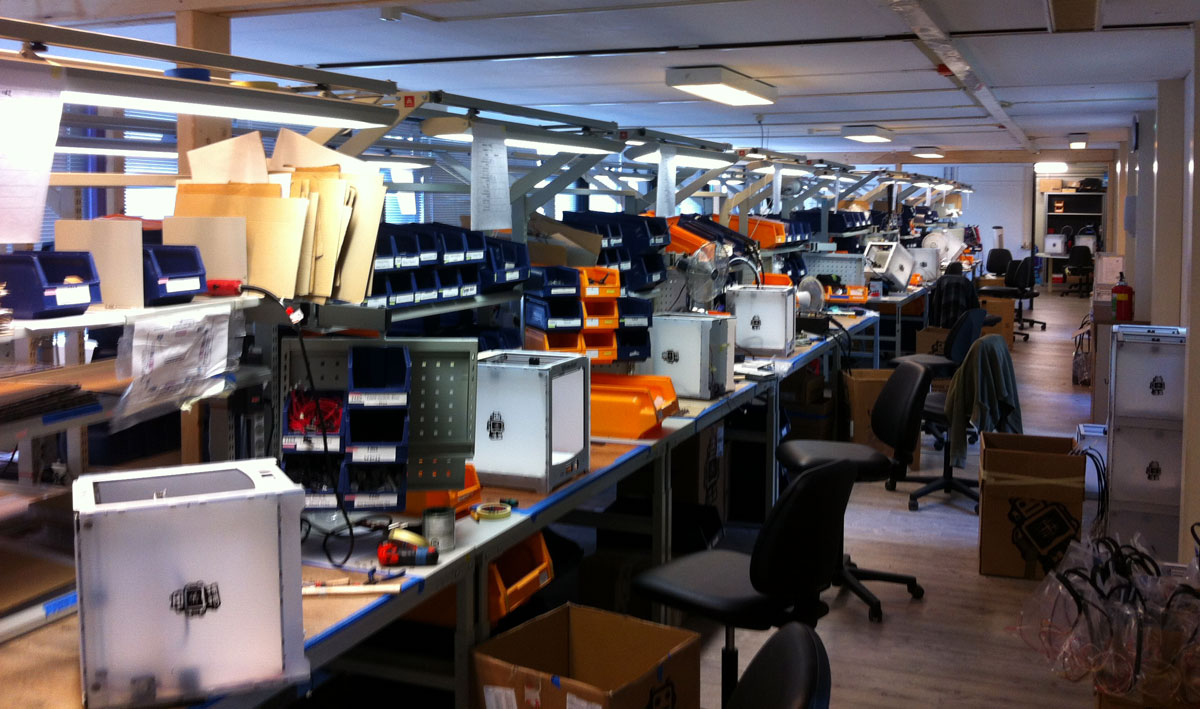From the proto space fablab in Utrecht to becoming the company that’s leading the way in personalized manufacturing: it only took a little over four years for Ultimaker and two 3D printer models to be combined into a profitable, increasingly one of the true open source mindsets. became a prime example. Growing business.
It all started when two of the company’s co-founders, Martijn Elsermann and Eric de Bruijn, found out about the RepRap 3D printer. After some tinkering they were able to collect ten of them, but only two of them worked, Sander van Geelen, who manages the vibrant Ultimaker community, tells me. “So he implemented some reforms and shared his thoughts in the workshops. They finalized it and published it open source.”
Then he started receiving emails from people who liked his product but didn’t want or didn’t want the time to source all the parts himself. Since there were few parts left, the founders of Ultimaker sold them in kit form. “They weren’t thinking of starting a company, they did everything in Martijn’s house.” Sander adds, “After a while the whole house was filled with Ultimaker boxes that needed to be sent out. Trucks were coming and going to the point where cement had fallen on the road”.
Thus he decided to set up a full fledged company and factory. They chose Gelson….. because it was largely centered around the three cities where the founders lived and this is where I found myself during my travels. The place is perfect for a small open source 3D printing company: it used to be a school, and it’s located right across the highway from the train station, with rather lush fields around it.
Sander joined the founding team in December of 2011. The company has doubled and tripled in size since then. “With the Ultimaker Original it was growing fast but still manageable,” says Sander, “now it’s still, just about, manageable. But sometimes I see people I don’t even know.” I am”.
The lead time since Ultimaker 2 launched in late 2013 was up to 10 weeks. Now the situation is under control and the lead time is only 10 days. “We had to devote our time to training the employees on how to assemble the machines correctly, they had to learn all the tricks. Now, however, we are on par and are starting to establish solid relationships with distributors around the world.”
While the Netherlands remains their first market, the demand for their machine is increasing in Germany, the UK and Scandinavian countries as well. They also signed distribution deals with iMakr, iGo3D, Ultimaker GB and two resellers in the United States: Dynamism and Maker Shed with Maker Shop in France.
“We want to stick with focused distributors, and we obviously look for young curious people like us rather than more established brands,” explains Sander. “We want them to share our enthusiasm and not just throw boxes around. They should be able to establish a personal relationship with their customers.”
Ultimaker last available sales numbers are relative to a few months ago and see the company as a potential market leader in Europe, while falling behind MakerBot in the US. All of this is probably going to change soon, as the company is focusing more on the other side of the Atlantic Ocean with its new distributors.
“We started a few months apart from MakerBot and in the beginning we were both headed in the same direction”, reveals Sander. “Then they collected a huge amount from investors and that led to the sale to Stratasys.” I pointed out that MakerBot’s focus is now on making the new replicators as “plug and play” as possible. Sander doesn’t think this is the way forward for Ultimaker.
“Generally the more plug and play a system is, the more walls you have to raise in terms of versatility. I think of it as making a 3D printer reliable and optimizing it while allowing people to choose their ideal settings. There’s a fine balance between qualifying. People shouldn’t be afraid to play with it and learn from their mistakes.”
People “experimenting, learning, and sharing their feedback with the company is exactly what Utlimaker wants. They realize that most of what they don’t make comes from shutting down the platform and selling the content or software they can easily R&D.” Contributions can be made. This does not mean that all ideas coming from the community are implemented – only the most viable – but it does mean that they are taken into account. Also, intensive R&D is carried out within the company .
“We have two internal R&D departments. One is focusing mostly on current Ultimaker technologies”, says Sander, revealing that the top is based right where we are sitting, though I thought of letting me take a look. It doesn’t come to their mind. “They are working on a dual extrusion system for Ultimaker 2 and a heated bed for Originals. The team is also studying potential CAD and 3D scanning applications.
